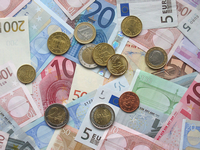It's happening again. International credit markets are showing signs of strain; economic growth around the world is stalling; and there are growing fears the global economy could slip back into a recession. Last Friday, amid this unfolding financial turmoil, the Group of Seven (G-7) finance ministers met in Marseille, France. Despite calls from the International Monetary Fund (IMF) for the group to "act now -- and act boldly," the summit ended without any concrete plan of action. Indeed, the finance ministers could barely even muster a short communique.
This contrasts starkly with how the world's leading economies reacted to similar, if more severe, conditions three years ago. In the fall of 2008, there was a swift and coordinated response consisting of bank bailouts, fiscal stimulus, loose monetary policy and unprecedented central bank cooperation. Over the coming months, the IMF's lendable resources were significantly boosted, and new global capital requirements for banks were agreed upon. Nothing remotely close to these steps appears to be on the horizon today. But why? How is the financial crisis of 2011 different from 2008?
The first important distinction between the crises has to do with the nature of the "toxic assets" at the center of each storm. In 2008, short-term lending between banks -- in many ways the lifeblood of the global financial system -- seized on fears that foolish investments in now valueless mortgage-backed securities might cause a loan partner to collapse. The U.S. Treasury recognized that in order to get credit flowing again, that bad debt had to be cut out of the system. Enter the Troubled Asset Relief Program (TARP), which essentially took a massive chunk of private debt and made it public.

